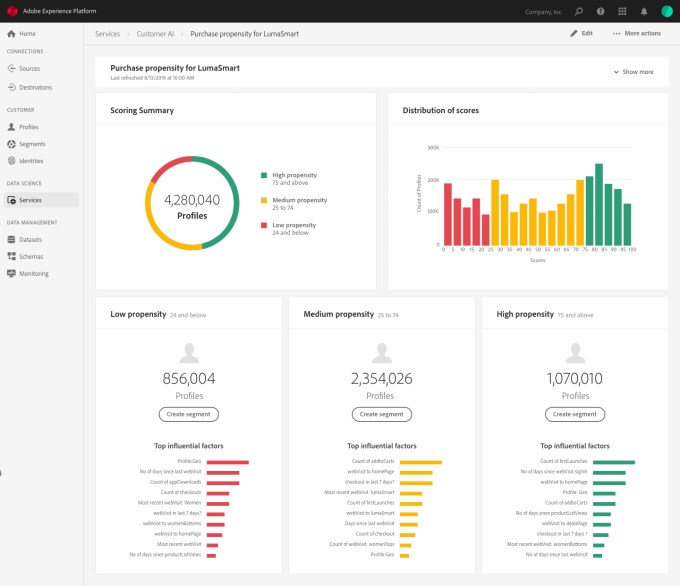There’s a lot of chatter around what kind of stimulus is needed to save the economy and ensure financially vulnerable Americans can retain some degree of stability. Talks have included everything from long-term rent delays to a universal basic income (UBI). But if policymakers want to do more than just keep the floor from falling out and start laying the groundwork for an actual recovery, then they ought to be discussing a different UBI as well: Universal Basic Internet.
Just as the electrification of America brought the nation out of the Great Depression, the Wi-Fi-cation of the nation can ease us out of the COVID-19 collapse. Consider that in 1932, a mere 10% of rural Americans had electricity. As a result, a divide in opportunity emerged: On one hand, city-dwellers had the modern infrastructure required to enjoy a standard of living that would allow them to fully pursue the American Dream; on the other, millions of Americans were literally in the dark (or, at least, candle-lit dimness).
That’s why the electrification of American became a central plank of President Franklin D. Roosevelt’s Great Depression recovery plan. But his plan wasn’t just to turn the lights on, it was to empower communities by making them the owners of their newly generated electricity. So under FDR’s guidance, Congress created the Rural Electrification Administration (REA).
The REA didn’t just barge into rural towns, install electricity and leave. Instead, the REA took two critical steps to make it a truly transformative agency: (1) it employed and empowered community members and (2) it taught people how to make the most of their newfound light. On step one, the REA relied on local partners to organize cooperatives that would supply the labor to build their community’s own electricity system.
By engaging community members, the REA turned “users” into “owners” and, consequently, did much more for rural America than would have been possible under federal auspices alone. On step two, the REA launched an “electric circus” that sent REA staff to educate new electricity users on how best to operate equipment, perform chores, cook and, of course, stay safe. This “circus” was more like a civic service program that facilitated a knowledge transfer from those who knew electrified life to those being exposed to the possibilities generated by electricity for the first time.
If the Great Depression showed rural America had been left in the dark, COVID-19 has revealed the plight of the millions of Americans left offline. Forced to shelter in place, Americans have been reintroduced to the centrality of high-speed internet to learning, working and simply living. But there’s an expansive digital divide between those with high-speed internet and those left searching for access to affordable broadband. Approximately 28% of Americans in rural areas do not have access to or cannot afford broadband — the rate is 23% in urban areas.
The digital divide exists on a racial dimension as well — whites are more likely than blacks or Latinx residents to report having broadband access at home.
America needs Universal Basic Internet. Achieving UBI requires a coordinated federal effort that, like the REA, (1) involves local stakeholders as a way to increase employment and civic pride and (2) creates an “internet circus” of trainers to increase digital literacy around the nation. This approach to closing the digital divide will go a long way in helping the nation recover from the COVID collapse.
FDR was rightfully proud of the REA. He realized that the federal government had to get involved because the private sector had failed to provide an essential service for Americans.
He noted that it is particularly important that extensions of rural electrification be planned in such a way as to provide service on an area basis. The practice has been too frequent in the past for private utility companies to undertake to serve only the more prosperous and more populous rural sections. As a result, families in less favored and in sparsely settled sections were left unserved.
Sound familiar?
The government has delegated providing access to internet to the private sector for far too long. Only the “more prosperous” have been able to enjoy the full benefits of high-speed internet. The disparity in access can be explained by economics: It’s not cheap to ensure every American has the connectivity required to thrive. Way back in 2010, the National Broadband Plan estimated that closing the digital divide would take at least $24 billion. If the upfront costs weren’t daunting enough, the costs of building out a broadband network rise as the distance to reach end users increases; in other words, the least dense areas are the most expensive to serve. So it comes as no surprise that private actors have opted to instead service dense, urban areas.
That’s why the government must and can seize this crisis to close the digital divide. In the words of Rahm Emanuel, a crisis is “an opportunity to do things you think you could not do before.” House Democrats just released a $3 trillion stimulus plan — surely, there’s a couple billion to spend on a Universal Basic Internet plan.
To those worried that the spending won’t generate enough of a return, the math makes clear that closing the digital divide will generate a digital dividend. There’s no easy to way to measure the impact of broadband access on the economy, but several studies indicate that this is exactly the sort of investment we should make in a time of crisis: some have estimated that doubling broadband speeds adds around 0.3% to GDP growth; others forecast that every broadband-related job generates between 2.5 and 4.0 additional jobs; and, yet another study determined that a 10 percentage point increase in broadband access could increase GDP per capita by $13,036. Simply put, there’s a high ROI — return on internet — associated with increasing broadband access.
President Lincoln, who guided the nation through its most trying times, stated that “[t]he legitimate object of government is to do for the community of people whatever they need to have done, but cannot do at all, or cannot do as well for themselves in their separate and individual capacities.”
The digital divide is not a problem any American can solve alone. So, it’s time for the government to bring the “internet circus” to town after town and make sure that Universal Basic Internet becomes a reality.





